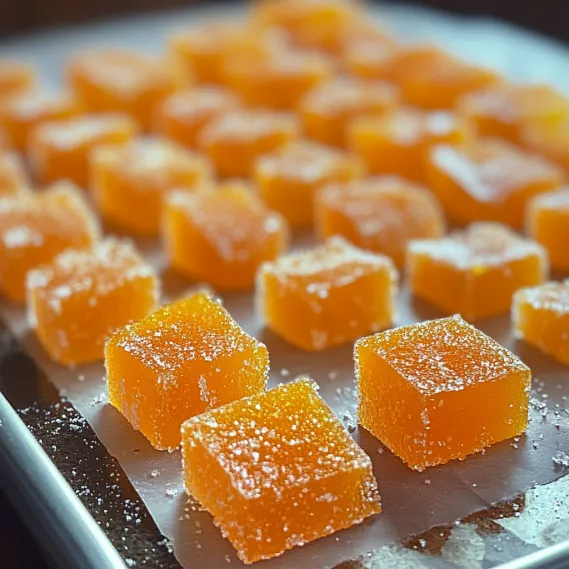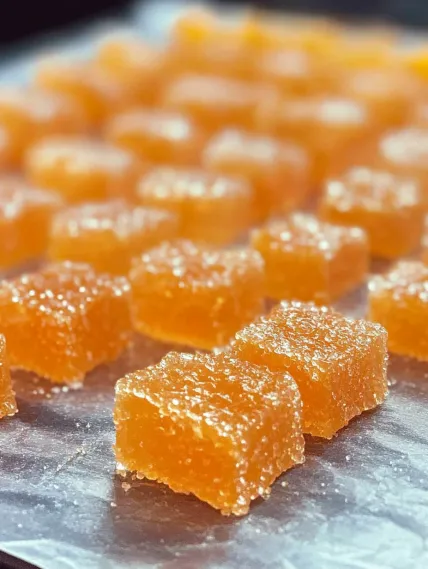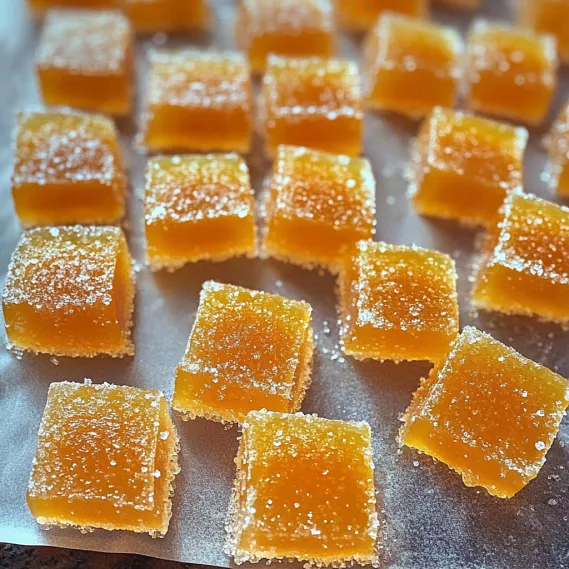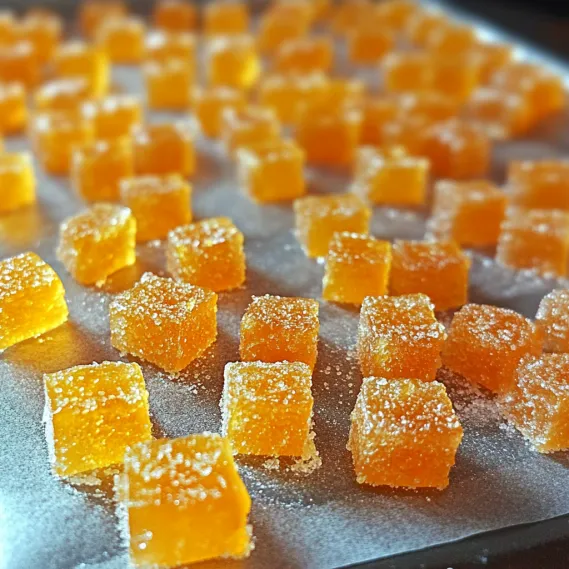 Pin it
Pin it
Homemade Orange Hard Candy delivers bright, sunny flavor in glistening amber pieces that break with a satisfying snap. This old-time sweet captures citrus magic in every shard, combining the fragrant oils from fresh zest with rich flavor from extract. The charm of making candy at home creates something store-bought versions just can't match.
I started making this when I needed something wow-worthy but doable for weekend company. After playing around with different kinds of shrimp and butter mixes, this version became our favorite. My hubby says they're the tastiest scampi he's ever had, and now whenever we host, everyone asks for them.
Key Ingredients and Smart Shopping Advice
- Orange Zest: Pick organic oranges; clean them well before taking off the zest
- Cream of Tartar: Stops sugar crystals forming so your candy stays smooth
- Light Corn Syrup: Gives you clear, glass-like candy instead of grainy pieces
- Orange Extract: Go for good quality pure stuff for real orange taste
- Candy Thermometer: You can't skip this for getting the right hard-crack temp
I've learned that adding just a bit of chicken powder (bouillon) really helps get that takeout flavor we all want. Don't have any? Try mushroom powder instead – it adds that same rich depth without changing how the dish tastes overall.
Step-by-Step Making Process
- Step 1: Get Everything Ready
- Put parchment on your baking sheet and grease it a little. Get all ingredients measured out and your thermometer handy. Being organized matters because things move fast once the candy hits the right temp.
- Step 2: Get the Orange Flavor
- Use a Microplane on your oranges but avoid the white part under the skin. Press the zest between paper towels to get the water out. Fresh zest gives you amazing flavor and pretty orange bits throughout.
- Step 3: Heat the Sugar Mix
- Put sugar, corn syrup, water, and cream of tartar in a heavy pot. Stir until it's all melted, then hands off. Let it boil without touching until it reaches 300°F-310°F.
- Step 4: Mix in Flavors and Pour Out
- Take off heat and quickly mix in your zest, extract, and food coloring if using. Pour right away onto your prepared sheet without scraping the pan. Spread to how thick you want it.
- Step 5: Let Cool and Break Apart
- Let candy cool completely somewhere without drafts. Once it's hard, break into pieces by bending the sheet or tapping gently. The random shapes make it look handmade and special.
 Pin it
Pin it
My first try taught me why temperature matters so much. I rushed things and ended up with sticky candy; going too hot burnt it. Now I watch the temp like a hawk, making sure the sugar mix hits just the right hard-crack point for perfect texture.
The Science Behind Candy Making
When you hit 300°F-310°F, water boils away leaving super-concentrated sugar that hardens into glass-like candy. Too cool makes sticky stuff; too hot means burning. Watch for smaller bubbles and light amber color, but always trust your thermometer.
 Pin it
Pin it
Fun Flavor Twists to Try
Switch to lemon or lime zest for different citrus kicks. Add some ginger for warmth or try rosemary for fancy herbal notes. During holidays, mix in cinnamon and clove for flavors that remind you of hot mulled orange drinks.
Making Your Candy Look Amazing
Try dipping one side in melted chocolate. Use crushed pieces to decorate cocktail glass rims. Make beautiful cake toppers by sticking bigger pieces into buttercream for a stained-glass look.
Fixing Common Problems
Cloudy candy means sugar crystals formed - keep side crystals from falling back in the pot. If it's sticky, you didn't get hot enough. Bitter taste means it cooked too long - pull it off the heat right when it hits the target temp.
 Pin it
Pin it
Pro Tricks for Better Results
- Let sugar sit with zest overnight to boost flavor
- Add a tiny bit of salt to brighten the taste
- Cut with oiled scissors for neat shapes
- Make small batches for better control
- Keep away from drafts while cooling to avoid cloudiness
Frequently Asked Questions
- → Is a candy thermometer necessary for this?
- Although a thermometer makes things easier, you can also use the cold water method. Drip a little syrup into icy water; if it hardens into crisp, breakable threads, you're good! Thermometers, however, are beginner-friendly and less risky for mistakes.
- → Why isn't my candy clear?
- Candy gets cloudy when sugar crystals form during cooling. To avoid it: 1) Drop the stirring once sugar dissolves, 2) Wipe down the pan's sides with a wet brush to remove stray crystals, 3) Always use corn syrup and cream of tartar as listed, 4) Don’t scrape the pot when pouring, and 5) Let your candy cool naturally without touching or moving it.
- → How should I store it, and for how long?
- For the best freshness, pack your candy in a sealed container and keep it dry! It’ll last 6-8 weeks. Adding wax paper between layers stops sticking. Skip cold or humid areas, since moisture makes the sweets sticky. A sprinkle of powdered sugar can come to the rescue if needed.
- → Can I swap orange for other fruits?
- Sure! Lemon, lime, or grapefruit are great substitutes. Replace the orange zest and extract with flavors that match your choice. For lemon candy, use lemon zest; lime for lime zest. Feel free to mix and experiment, too. Adjust any coloring to suit the new citrus vibe!
- → What if my candy stays soft?
- If your candy ends up sticky or not firming up, the temperature likely didn’t reach the hard-crack point (300°F to 310°F). Be careful with heat accuracy! High altitudes and humid weather can also impact your results, so try a few adjustments if needed.
